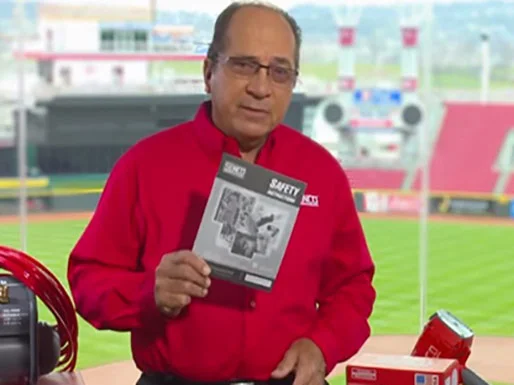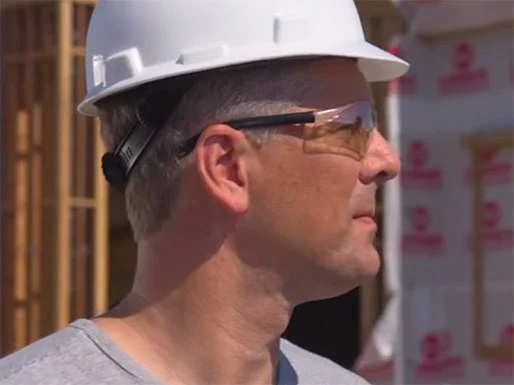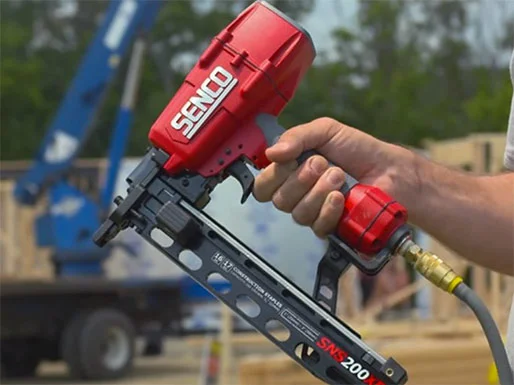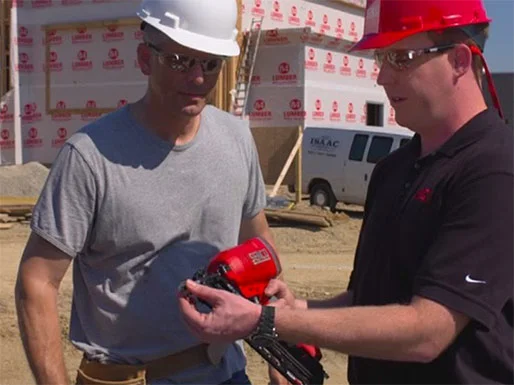Safety Program
DEDICATED TO SAFER WORK
At SENCO we design with safety in mind, and have developed extensive resources and safety programs for the industry to encourage and promote a “SENCO safe” workplace.
We also apply those same safety practices to our own company. At SENCO, we promote and implement extensive safety practices to ensure the well-being of every employee.

LEARN ABOUT YOUR TOOLS AND FASTENERS
Every SENCO tool comes with an operator’s manual that explains safe tool operation and includes critical warnings. Never operate a tool without first reading the manual. If your tool becomes separated from the manual, you can review them here.

PROTECT YOURSELF AND OTHERS.
- Before you pick up any tool, put on your safety glasses. Operating equipment without the proper eye protection may be a violation of federal law and puts you at risk for permanent injury.
- Only connect air powered tools to clean, dry, regulated compressed air.
- Never exceed the maximum air pressure or use bottled gaswith air powered tools.

OPERATE POWER TOOLS SAFELY.
- Keep your finger off the trigger when you’re not driving fasteners.
- Never use a tool that has a damaged or altered safety, springs or trigger.

SAFETY IS A TEAM EFFORT!
Don’t hesitate to remind coworkers on your work site if you ever see them mishandling a tool. The injury you prevent could be your own.
SAFETY PROCEDURES
BEST PRACTICES TO FOLLOW WHEN USING SENCO PNEUMATIC NAILER SYSTEMS:
Fittings / Couplers
- Ensure tight install
Magazine
- Do not load with trigger and / or WCE engaged
Main Body
- Check for air leaks (gaskets, tool body)
- Ensure all screws are tight (top and rear caps)
Compressor & Hoses
- Check prior to starting work (ensure no cracked hoses and compressor is functioning correctly).
Work Contact Element / Safety / Nose Piece
- This is the most important feature
- Check that it is free and clear of debris before using
Pressure Adjustment
- Correctly set (70-120 psi)
- Check tool or owner’s manual for correct inbound pressure
Trigger
- Check trigger mode before using
Types of Collation
- Be cognizant of flying debris from plastic strips or spakrs from wire-weld fasteners
Depth of Drive Adjustment
- Check that it is free and clear of debris before using
Fastener
- Ensure you are using the correct fastener for the application

PREVENT ACCIDENTAL DISCHARGE
- Remove your finger from the trigger the seconed you stop firing every time and it will become a reflex.
- Always keep your tool pointed down and away from yourself and others when not in use, and never walk around with your finger on the trigger.
- Always make sure air powered tools are pointed at the ground when attaching air supply lines.
- Assume a tool is always loaded with fasteners and ready to fire, so never point it at yourself or others at any time.
ENSURE MECHANICAL INTEGRITY
- Tool safeties, springs and triggers should never be altered or removed
- Inspect and clean your tools daily to make sure the safety and triggers are moving freely. Never use the tool if either the safety or trigger sticks or binds. And never use it if any parts are missing, inoperable, loose or damaged.
DRIVE FASTENERS SAFELY
- Tools should only be fired into your work surface, and never fired into surfaces that are too hard for fasteners to penetrate.
- Be careful not to drive fasteners too close to the edge of a work surface or at too steep of an angle.
TREAT TOOLS WITH RESPECT AND CAUTION
- Tools should always be disconnected before maintenance is performed on them or if you are leaving your work station.
- Always use parts and fasteners recommended by the tool’s manufacturer and never modify a tool.